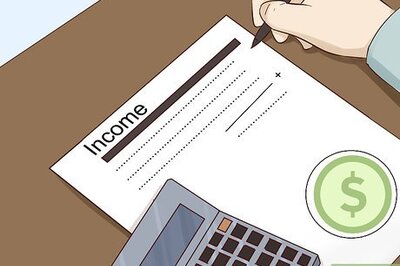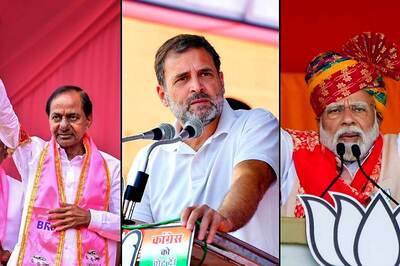
views
BRUSSELS: The European Union wants to strike a deal this week on a new target to slash greenhouse gases, but the plan has become entangled in a budget dispute threatening to block its climate ambition.
Days before the EU is meant to proclaim its new target at a global summit, the 27 national leaders meet in Brussels on Thursday and Friday to hammer out agreement over cutting emissions in the next decade by at least 55% from 1990 levels.
The current 2030 goal is a 40% emissions cut.
Here is where things stand.
WHY THE HURRY?
The EU wants a deal this week. On Dec. 12, the United Nations hosts a global summit, where world leaders will present higher climate goals. Brussels does not want to show up empty-handed.
Doing that would damage its status as a global climate leader, and risk it being outpaced by China and the incoming U.S. administration, both of which are working on tougher targets.
Failure to clinch a deal this week would also probably mean the EU breaks its promise to submit a new emissions-cutting pledge this year under the 2015 Paris Agreement – another potential blow to the bloc’s prestige.
BUDGET WRANGLE
Sources say the EU’s ability to get a deal this week hinges on a battle over its budget for 2021-2017 – a 1.8 trillion euro ($2.18 trillion) package that includes a COVID-19 recovery fund.
Poland and Hungary, both under EU scrutiny over judicial and media independence, are blocking the budget because they object to making money conditional on respecting rule of law.
The climate and budget issues are linked. The EU has said 30% of its budget will be spent on helping countries cut emissions. If the cash spat is solved, diplomats say a climate deal is likely.
CONDITIONS
Budget aside, negotiations on the climate deal come down to the “enabling framework” – EU jargon for conditions attached to the target.
All EU leaders must support the climate deal. The good news, EU officials say, is that no country is opposing the “at least 55%” target.
Rather, the challenge is to win over eastern states with coal-dependent power sectors and energy-intensive industries, such as Poland and the Czech Republic. They want clearer guarantees of EU support to help them decarbonise.
WHY 55%?
The European Commission says cuts of “at least 55%” are needed this decade to have a realistic shot at the EU’s pledge of zero net emissions by 2050.
The net-zero goal, if followed globally, would limit global warming to 1.5 degrees Celsius above pre-industrial times and avert the most devastating impacts of climate change.
There is not much wiggle room. Already, average global temperatures have risen by more than 1 degree, a change helping fuel ferocious wildfires, stronger hurricanes and more frequent and intense heat waves.
The European Parliament, which must approve the EU target, wants a steeper 60% emissions cut by 2030. Environmental campaigners want more, arguing that, as a major historical producer of planet-warming emissions, the EU should cut faster than other regions.
JUST THE BEGINNING
Once the target is agreed, the real world work begins.
The EU is already drafting a series of policies to transform its economy to pollute less.
($1 = 0.8239 euros)
Disclaimer: This post has been auto-published from an agency feed without any modifications to the text and has not been reviewed by an editor
Read all the Latest News, Breaking News and Coronavirus News here




















Comments
0 comment